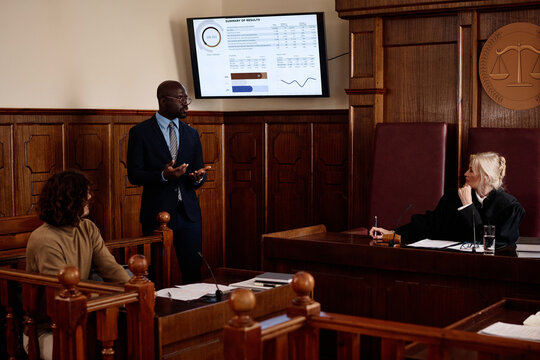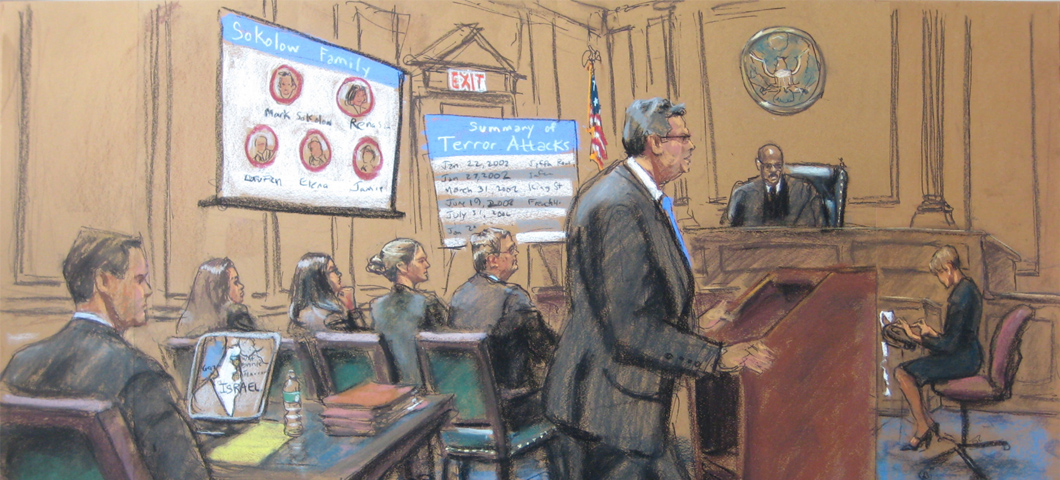Accomplishing Success in Court Trials: The Value of Specialist Trial Presentations
Browsing the Complexities of Test Presentations: Tips for Seamless Shipment and Engaging Arguments
In the world of legal process, the art of trial discussion stands as a crucial determinant of success. As lawyers browse the elaborate internet of courtroom characteristics, the ability to effortlessly supply arguments and proof while captivating the jury's focus becomes vital. The intricacies fundamental in test presentations need a fragile equilibrium of finesse, approach, and ability. By developing methods that ensure a refined shipment and crafting engaging arguments that resonate with the audience, lawful specialists can significantly improve their advocacy. In a globe where persuasion preponderates, understanding the intricacies of trial discussions is not simply an alternative yet a necessity for those seeking to prevail in the court.

Recognizing Trial Objectives
To efficiently browse a test, it is critical to have a clear understanding of the objectives that need to be achieved. Before entering the courtroom, legal teams must define their goals and desired outcomes. These objectives serve as directing principles throughout the trial, shaping strategies and influencing decision-making processes.
Understanding trial objectives involves a comprehensive analysis of the instance, lawful criteria, and the customer's finest passions. Trial Presentations. It calls for a thorough exam of the realities, recognizing crucial problems, and expecting prospective challenges. By setting measurable and particular goals, attorneys can customize their presentations and debates to straighten with the preferred results
Moreover, a clear grip of test goals enables lawful teams to prioritize proof, witnesses, and legal arguments properly. It permits the advancement of a coherent story that resonates with the judge and court, reinforcing the general case discussion.

Organizing Evidence Properly
Having a clear understanding of test goals lays the foundation for organizing proof successfully in legal proceedings - Trial Presentations. By straightening the presentation of evidence with the wanted results of the test, lawful teams can reinforce their disagreements and enhance their persuasiveness. One crucial element of organizing proof is categorization. Grouping proof based upon styles or significance to specific lawful aspects can help streamline the discussion and make complex information a lot more digestible for the court or jury.
An additional secret element in arranging proof efficiently is developing a logical flow. Offering evidence in a meaningful and consecutive fashion can help develop an engaging narrative that sustains the lawful arguments being made. Furthermore, making use of visual aids such as graphes, graphs, or timelines can additionally boost the company of evidence and help in clearing up intricate relationships or sequences of events.
Moreover, guaranteeing that all proof presented is pertinent and admissible to the case is vital. Unnecessary or inadmissible evidence can detract from the strength of the argument and potentially damage the integrity of the here and now party. As a result, a careful review and option process ought to be taken on to consist of only one of the most impactful and lawfully audio evidence in the trial presentation.
Crafting Persuasive Narratives
Crafting engaging stories plays a pivotal role in presenting persuasive debates during legal proceedings. A well-crafted narrative has the power to captivate the audience, stimulate feelings, and ultimately sway the choice in support of the here and now event. When creating a story for a test presentation, it is vital to establish a clear storyline that highlights bottom lines and attaches them in a systematic way. Begin by describing the truths of the case in an engaging fashion, making sure that the sequence of events is easy to adhere to. Present characters effectively, providing history info that helps the audience comprehend their inspirations and actions. Furthermore, incorporating dazzling summaries and appealing language can bring the story to life, making it extra unforgettable for the judge and court. By weaving with each other proof, testament, and legal debates right into a convincing and natural narrative, lawyers can successfully advocate for their customers and boost the likelihood of a Resources desirable result in the courtroom.
Mastering Visual Help
Reliable use of visual aids is crucial to enhancing the effect and clearness of test discussions. Visual aids, when used tactically, have the power to streamline intricate information, strengthen bottom lines, and leave a lasting impression on the judge and jury. To grasp aesthetic help in test discussions, it is essential to guarantee that they are clear, succinct, and appropriate to the debates being made.
When including aesthetic help, such as graphes, graphs, photos, or timelines, into a trial presentation, it is vital to keep them visually appealing yet professional. The visuals should enhance the spoken debates, giving a graph of go to this website the info being gone over without overwhelming the audience with unnecessary information.
In addition, exercising with the aesthetic aids beforehand is necessary to guarantee a seamless delivery throughout the test. Familiarizing oneself with the content, changes, and timings of each aesthetic aid can help keep the circulation of the presentation and prevent technological problems that may emerge.
Providing Impactful Closing Arguments
A compelling closing disagreement offers as the end result of a test presentation, enveloping the core narrative and convincing the court and jury in the direction of a favorable decision. Begin by laying out the main disagreements that sustain your client's setting, stressing why the evidence presented throughout the test sustains your narrative.
Additionally, including emotional charm can better strengthen your closing argument. By connecting and humanizing the situation on an individual degree with the decision-makers, you can stimulate empathy and understanding, influencing their assumption of the realities presented. Additionally, resource repeating the lawful criteria that must be met for a beneficial judgment can enhance the legitimacy of your placement. Ultimately, a well-crafted closing argument ought to leave an enduring impact, engaging the judge and jury to rule in your customer's favor.
Verdict
To conclude, grasping trial presentations involves understanding objectives, organizing evidence, crafting stories, making use of aesthetic help, and providing impactful closing disagreements. By executing these techniques effectively, lawyers can offer their instance effortlessly and make compelling arguments in the court room. It is critical to browse the intricacies of test presentations with accuracy and ability to achieve success in lawful process.
By lining up the presentation of proof with the preferred outcomes of the test, legal teams can reinforce their disagreements and improve their persuasiveness (Trial Presentations). To understand visual help in trial presentations, it is crucial to make certain that they are clear, concise, and relevant to the disagreements being made
A compelling closing debate serves as the culmination of a test presentation, enveloping the core narrative and persuading the court and court towards a desirable decision. Begin by outlining the primary arguments that sustain your client's setting, emphasizing why the proof presented throughout the test sustains your narrative.In verdict, understanding trial discussions involves comprehending objectives, organizing proof, crafting narratives, using aesthetic aids, and supplying impactful closing arguments.